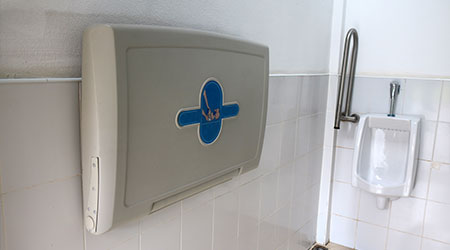
7 Healthcare Design Trends for 2018
January 24, 2018
The already complex arena of healthcare facility design, construction, and operations is set to become even more complex thanks to forces ranging from changing laws and regulations to new technologies to shifting patient needs and preferences. The result, says a major healthcare architecture firm, is that seven design trends will have an impact on healthcare design in 2018 and beyond.
“From Emergency Departments to micro-hospitals, to the amenities in and locations of hospitals, the year ahead will see continued changes in how healthcare providers are designing and equipping their facilities to meet both patient and market needs,” said Jason Carney, AIA, a partner with E4H Environments for Health Architecture, an architecture firm exclusively focused on healthcare and health innovation, which identified the trends. “Add in the pressures of rapidly evolving regulations and payment models, and healthcare design has never been more dynamic than it is now.”
1. Behavioral Health Drives Emergency Department Reconfigurations. Reflecting both the national opioid-abuse crisis and rising awareness of mental health conditions, hospitals are recognizing an intense need to accommodate cognitively impaired patients more effectively and more sensitively. Hospital leaders are seeking a careful balance in separating patients who pose a risk to themselves and others from the general Emergency Department (ED) population, while ensuring all patients are treated with compassion and dignity. At facilities such as Connecticut’s Waterbury Hospital and Newport Hospital in Rhode Island, areas within the ED are being designed for people and families who are experiencing or approaching a crisis requiring behavioral-health or addiction-management intervention. Because patients with cognitive impairment and behavioral issues often require longer stays in the ED than the general population, an emerging best design practice is adding features for them such as bathroom showers, places to securely store belongings, and access to decompression space.
2. Virtual Reality Becomes a Critical Planning Tool for Hospital Design. In 2018, more healthcare clients will benefit from virtual reality (VR) technology as they partner with architects to imagine and design complex spaces like operating rooms. The ability to use VR goggles and headsets to visualize space in three dimensions and coordinate both the room design and placement of equipment is improving facility efficiency and safety. VR headset technology breaks through the traditional limitations of a screen to put people “in” the design to experience, evaluate, and comment on everything from casework configurations to outlet quantities and furniture arrangements.
3. Microhospitals Gain Ground. According to US News & World Report, microhospitals are now operational in 19 states across the U.S., providing services similar to larger hospitals (ED, pharmacy, lab, radiology, and surgery) in a smaller envelope. These mini-hospitals are roughly 15,000 to 50,000 square feet, open 24/7, and maintain between five and 15 inpatient beds for observation and short stay use. Recent changes to Centers for Medicare and Medicaid Services policy regarding reimbursement schedules for satellite facilities, authorizing microhospitals with dedicated emergency departments as eligible for both 340B discounted drug pricing and the Outpatient Prospective Payment System, will make microhospitals an increasingly popular option.
4. Make Space for Telehealth. healthcare patients will rise 7 percent and in-home healthcare services will rise 13 percent. Increasingly, telehealth is being utilized for specialty services like radiology, psychiatry, and dermatology as a way to obtain a specialist’s opinion without the inconvenience of an additional office or hospital visit. Healthcare facilities should start thinking now about how to best incorporate telehealth services into their master plan. Telehealth affects facility design in several ways, including how treatment rooms are configured to accommodate remote consultation and providing infrastructure for the technological equipment. Lighting, privacy, and aesthetics of rooms used for confidential telehealth consultations are all important concerns that need to be addressed by architects and designers. Telehealth technology is also transforming lobbies, common spaces, and admissions areas. Increasingly these areas are being designed to include accessible areas for kiosks or tablets from which patients can register, view their records, or videoconference with a provider.
5. Hospitals Take a Cue from the Hospitality Industry. The healthcare industry is embracing the trend of removing out-patient services from traditional, larger hospitals and moving them to more consumer-friendly environments. In some cases, this trend has been shown to create operational efficiencies and improve clinical outcomes, such as decreased re-admittance rates. E4H recently worked with a New York hospital to convert a 27-unit physician and nurse dormitory into temporary housing for immunocompromised patients. The New York hospital administrators worked with architects to serve this “in-between” population, providing a facility that feels more like a hotel than hospital, with cozier interior design; private, suite-style rooms; and specialized air and water filtration systems to protect immune-suppressed patients. Rather than an inpatient charge nurse, a uniquely skilled concierge service provides front-desk response to patients’ daily needs.
6. Move to Malls. An increasing number of same-day services and procedures may be performed outside hospitals, in community locations chosen for ease of access and improved customer convenience. Established retail locations are and will become even more attractive to developers of microhospitals, outpatient imaging, urgent care and ambulatory surgery centers, and medical office buildings. This approach serves not only convenience-minded patients but also providers interested in growing market share. Trends that Walmart and Panera consider for their locations — demographics, quality of highway or transit access, parking — all translate to healthcare as well.
7. Acute Care Needs Continue to Grow. As Baby Boomers age, 10,000 Americans will turn 65 every day for the next 20 years, and the total demand for inpatient care will only grow. Additionally, as services are pushed to outpatient facilities, remaining inpatients will increasingly be the sickest and most acute, requiring longer stays. Maximizing the efficiency of space and movement of medical staff to serve this inpatient population, including with more private rooms and fewer shared rooms, is critical to healthcare facility design. In the last two years E4H has designed new private, room bed towers at the Heart Hospital at Baylor Plano, Eastern Maine Medical Center, and University of Vermont Medical Center.
This Quick Read was submitted by Edward Sullivan, editor of Building Operating Management magazine, edward.sullivan@tradepress.com. Click here to read about healthcare design.
Next
Read next on FacilitiesNet












